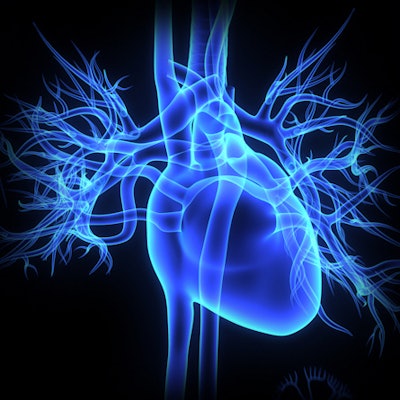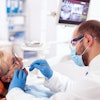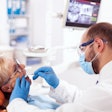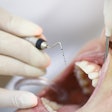
Rheumatoid arthritis (RA) patients have elevated rates of periodontal and cardiovascular disease, suggesting that their immune responses to gum disease bacteria may be linked to higher heart disease risk, according to a study published on November 17 in Arthritis & Rheumatology.
Exposure to the gum disease pathogen Aggregatibacter actinomycetemcomitans (Aa) and the protein toxin it secretes (leukotoxin A [LtxA]) was strongly associated with atherosclerosis in the coronary and carotid arteries of rheumatoid arthritis patients. The study authors believe this is the first study to explore the association of periodontal pathogens with cardiovascular disease (CVD) in patients with rheumatoid arthritis, they wrote.
"These findings may suggest that assessing immunity against Aa may predict CVD in RA patients and that Aa-exposed patients may be appropriate for heightened CVD screening and primary prevention," wrote the group, led by Dr. Jon Giles of the division of rheumatology at Columbia University.
The oral-systemic link
Individuals with rheumatoid arthritis are at greater risk of atherosclerotic cardiovascular disease than those without RA. In addition to traditional cardiac risk factors, several factors linked to RA such as seropositivity, the duration of rheumatoid arthritis, and measures of articular and systemic inflammation have been associated with atherosclerotic burden, the authors wrote. However, these factors alone do not account for the level of risk. Because periodontitis causes inflammation, Giles and colleagues examined whether gum disease-associated pathogens may increase a patient's risk.
In the study, computed tomography (CT) and ultrasound scans were used to assess coronary artery calcification (CAC), carotid intima media thickness and plaque, and ankle-brachial index in 197 rheumatoid arthritis patients. In addition, serum samples were tested for antibodies targeting Porphyromonas gingivalis (anti-Pg), Aa serotype b (anti-Aa), and Aa leukotoxin A (anti-LtxA). Then, generalized linear models were used to find associations between these antibodies and measures of atherosclerosis.
Among the patients, 43% tested positive for anti-LtxA, 37% for anti-Pg, and 21% for anti-Aa, the authors wrote. Anti-Aa and/or anti-LtxA seropositivity was significantly associated with all assessment measures of atherosclerosis except carotid plaque. There was no link between anti-Pg and atherosclerosis, according to the authors.
The mean coronary artery calcification score was 90% higher in those with anti-Aa and/or anti-LtxA than in those without either antibody (19 vs. 10 units, respectively; p = 0.033). This was after adjusting for relevant confounders and tooth loss. The adjusted odds of having a CAC score ≥ 100 Agatston units was 2.23-fold higher for those with anti-Aa and/or anti-LtxA than those without either antibody.
Limits, but possible path to better outcomes
The study did have some weaknesses, including its cross-sectional design, the authors wrote. This format does not allow for firm causality conclusions, and cumulative exposure could not be assessed because the point of seroconversion to reactivity against the periodontal germs was unknown.
Despite those limitations, immunoreactivity against Aa and LtxA was associated with atherosclerosis in multiple vascular beds of these patients and should be considered in treatment, they concluded.
This suggests a "role for treatment/prevention of periodontal disease in the prevention of CVD in RA," they wrote.




















